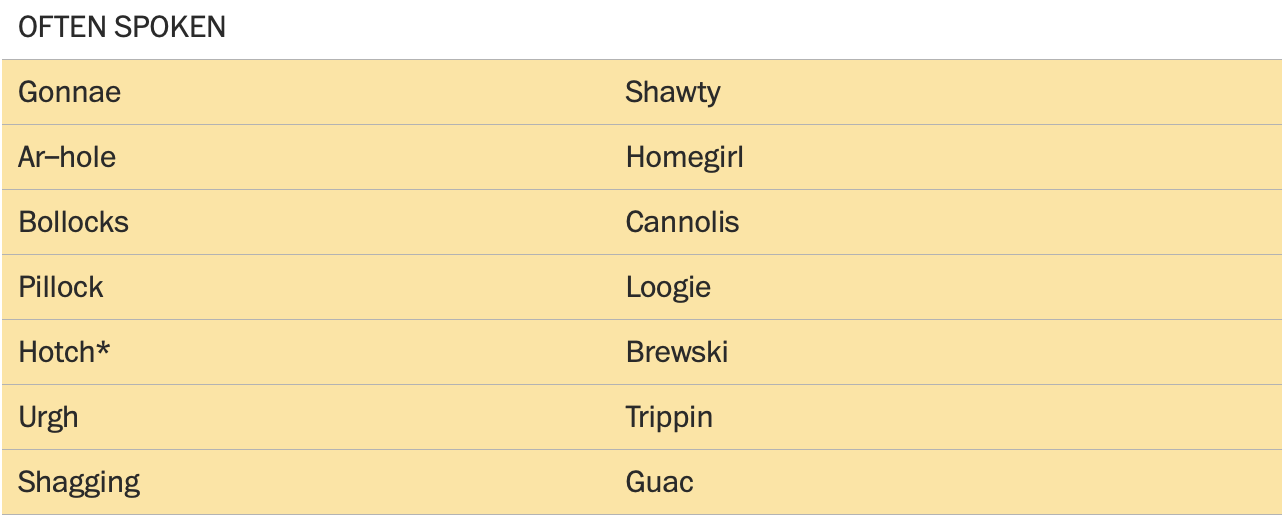
"We used our new measure to focus our book-word analysis on those words that people say out loud with at least some regularity. And with every crank of the out-loud-ness dial, we watch the two dialects get less and less similar, and more and more hilarious. We start with relatively harmless terms. Footballers and whingeing stand out on one side, and statewide and nonfat stand out on the other."
"But it escalates quickly. British rises from manky and dodgy to shagging to knobhead and bruv. American goes from hoagie and doggone to homegirl and loogie to - at the slangiest echelons of the language - cornhole and bruh. In the above, more British is on the left and more American is on the right, based on the OpenSubtitles dataset from Opus. Then there's the swear words."
A new measure focused book-word analysis on words people commonly say aloud. Increasing the out-loud-ness threshold reveals growing divergence between American and British dialects, making differences more pronounced and often humorous. Initial contrasts include footballers and whingeing on the British side versus statewide and nonfat on the American side. As spoken frequency rises, British examples escalate from manky and dodgy to shagging, knobhead, and bruv, while American examples move from hoagie and doggone to homegirl, loogie, cornhole, and bruh. The analysis uses the OpenSubtitles dataset from Opus and highlights pronounced differences in spoken slang and swearing.
Read at FlowingData
Unable to calculate read time
Collection
[
|
...
]